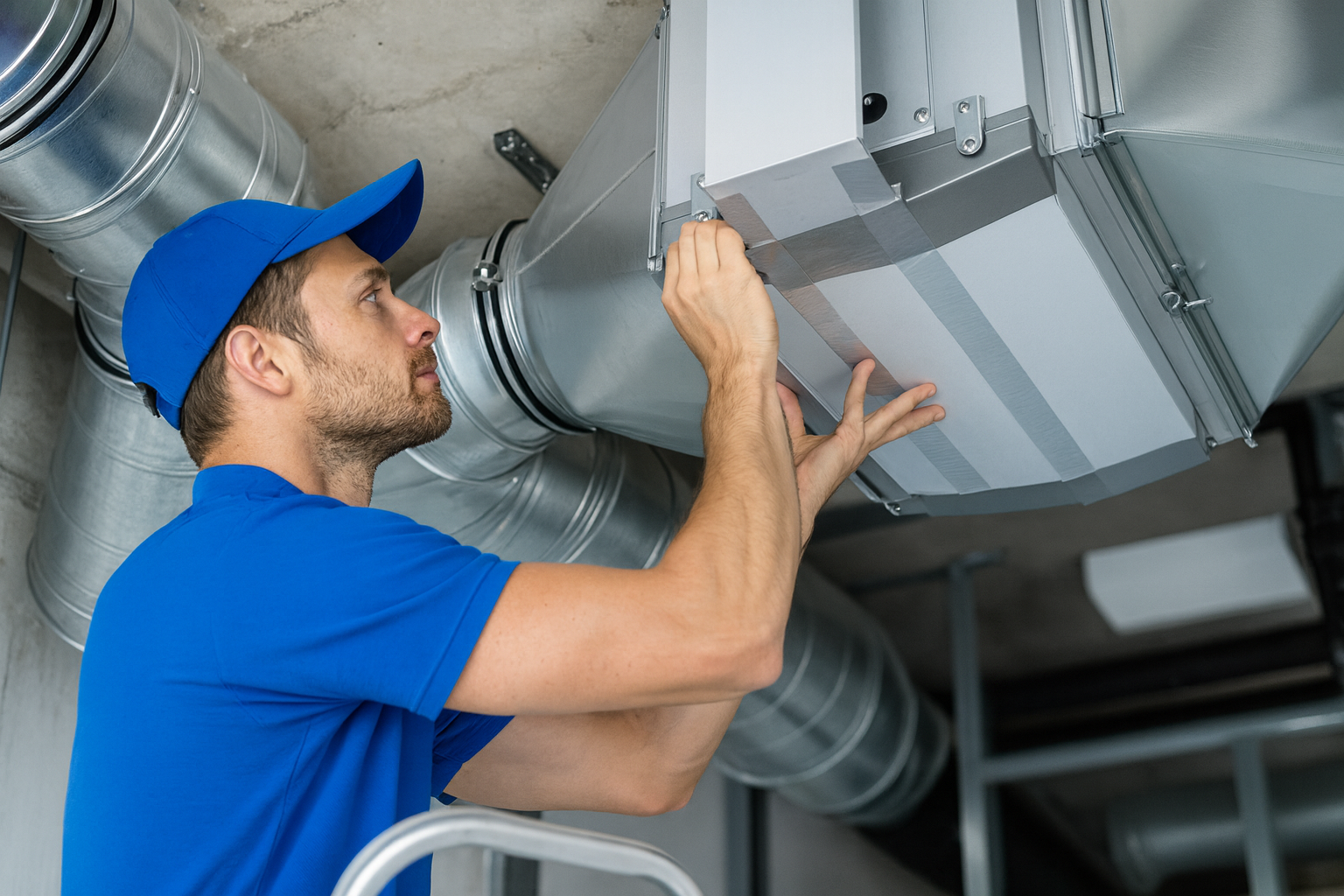How to Improve Indoor Air Quality with an Air Conditioning System: XCEL HVAC Guide to California Climate Challenges
When it comes to maintaining good indoor air quality (IAQ), the varied climate of California brings its own set of opportunities and problems. Homeowners want efficient ways to preserve the cleanliness and comfort of their air, which may be affected by a variety of factors, including dry inland heat, coastal humidity, and smoke from wildfires. Your air conditioning system, fortunately, has the potential to play a significant part in enhancing indoor air quality. In this article, we will discuss how to optimize your heating, ventilation, and air conditioning system to improve air quality while attending to the problems posed by the climate in California.

Understanding California’s Climate Impact on Indoor Air Quality
The Challenge: How Weather Affects Your Indoor Air
California’s varied climates impact IAQ in different ways:
- Inland Areas (Pleasanton, Concord, Walnut Creek): Hot, dry summers lead to dust and pollen buildup.
- Coastal Regions (Martinez, Benicia): Higher humidity can encourage mold and mildew growth.
- Wildfire Season (Napa, San Ramon): Smoke and fine particulate matter (PM2.5) infiltrate homes, reducing air quality.
Regional Considerations for Bay Area Homeowners
- Pleasanton & San Ramon: Dust and pollen are major concerns—high-efficiency filters help.
- Napa & Walnut Creek: Wildfire smoke requires advanced air purification.
- Martinez & Benicia: Humidity control prevents mold in HVAC systems.
How to Use Your Air Conditioning System to Improve Air Quality
Choose the Right Air Filters
- HEPA Filters: Capture 99.97% of particles, including smoke and allergens.
- MERV 13+ Filters: Ideal for trapping dust, pollen, and bacteria.
- Replace Filters Regularly: Every 1-3 months, especially during wildfire season.
Enhance Air Purification
- UV Air Purifiers: Kill mold, bacteria, and viruses in HVAC ducts.
- Whole-Home Air Scrubbers: Remove smoke, VOCs, and odors.
- Portable Air Purifiers: Supplement HVAC filtration in high-pollution areas.
Control Indoor Humidity Levels
- Ideal Range: 30-50% – Prevents mold growth and dust mites.
- Smart Thermostats: Monitor and adjust humidity automatically.
- Dehumidifiers: Help in coastal areas where AC alone isn’t enough.
XCEL HVAC’s Solutions for Cleaner Air in California Homes
Regular HVAC Maintenance
- Bi-Annual Tune-Ups: Ensure your system runs efficiently, reducing allergens.
- Duct Cleaning: Removes dust, mold, and debris that circulate in your home.
Upgrade to Energy-Efficient & Smart Systems
- High-Efficiency AC Units: Reduce energy costs while improving air filtration.
- Smart Thermostats: Optimize airflow and humidity for better IAQ.
- Zoning Systems: Customize air quality in different home areas.
Wildfire & Smoke Preparedness
- Advanced Filtration: MERV 13+ or HEPA filters block smoke particles.
- Air Sealing: Prevent outdoor pollutants from entering.
Final Tips for Maintaining Healthy Indoor Air
Change filters regularly – Critical for allergen control.
Schedule professional HVAC maintenance – Prevents mold and inefficiency.
Use a combination of filtration & purification – In the face of California’s air pollution challenges, many homeowners wonder how can I reduce air pollution in California. The best defense is using a combination of effective HVAC systems, air purifiers, and filtration solutions that keep your indoor air clean and safe.
Need Help Improving Your Home’s Air Quality?
XCEL HVAC provides expert AC maintenance, air purification, and energy-efficient upgrades tailored to California’s climate.
By optimizing your air conditioning system, you can combat California’s climate challenges and breathe easier year-round. Stay proactive with maintenance and upgrades to ensure clean, healthy air in your home. Contact us today for a free IAQ assessment!
FAQs
How often should I replace my HVAC air filter?
For optimal air quality, replace standard filters every 1-3 months. During wildfire season or high pollen months, check filters monthly and replace them as needed.
Can my air conditioning system reduce wildfire smoke indoors?
Yes! Using a MERV 13 or HEPA filter can trap smoke particles. Pairing your AC with an air purifier or whole-home air scrubber provides even better protection.
What’s the best way to control indoor humidity in coastal areas?
A dehumidifier or HVAC system with humidity control helps maintain 30-50% humidity, preventing mold and mildew growth.
Do UV air purifiers really work in HVAC systems?
Yes! UV-C lights installed in your ductwork kill mold, bacteria, and viruses, improving overall air quality.
Are smart thermostats worth it for air quality?
Absolutely! Smart thermostats monitor humidity, adjust airflow, and optimize filtration, making it easier to maintain healthy IAQ.


